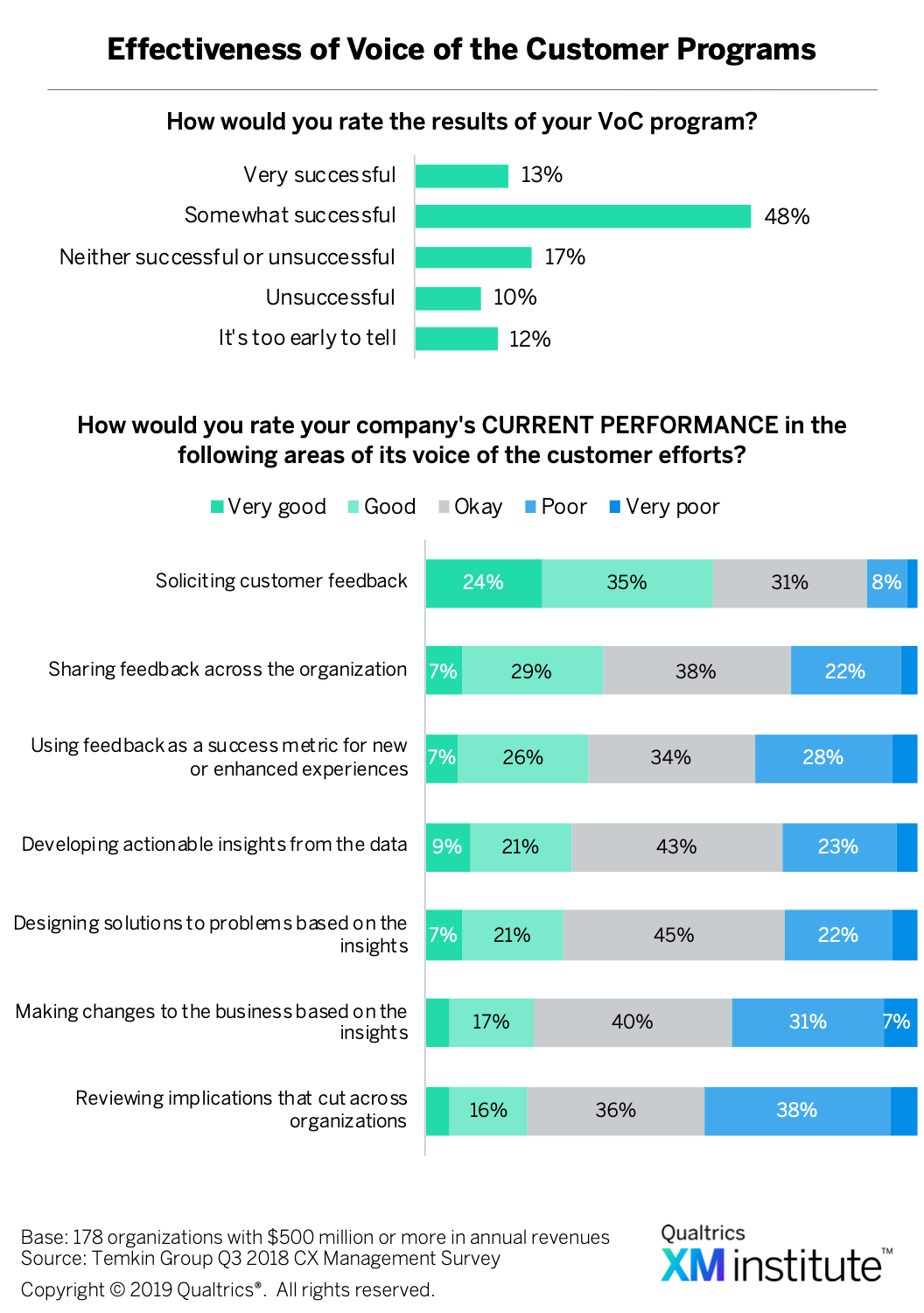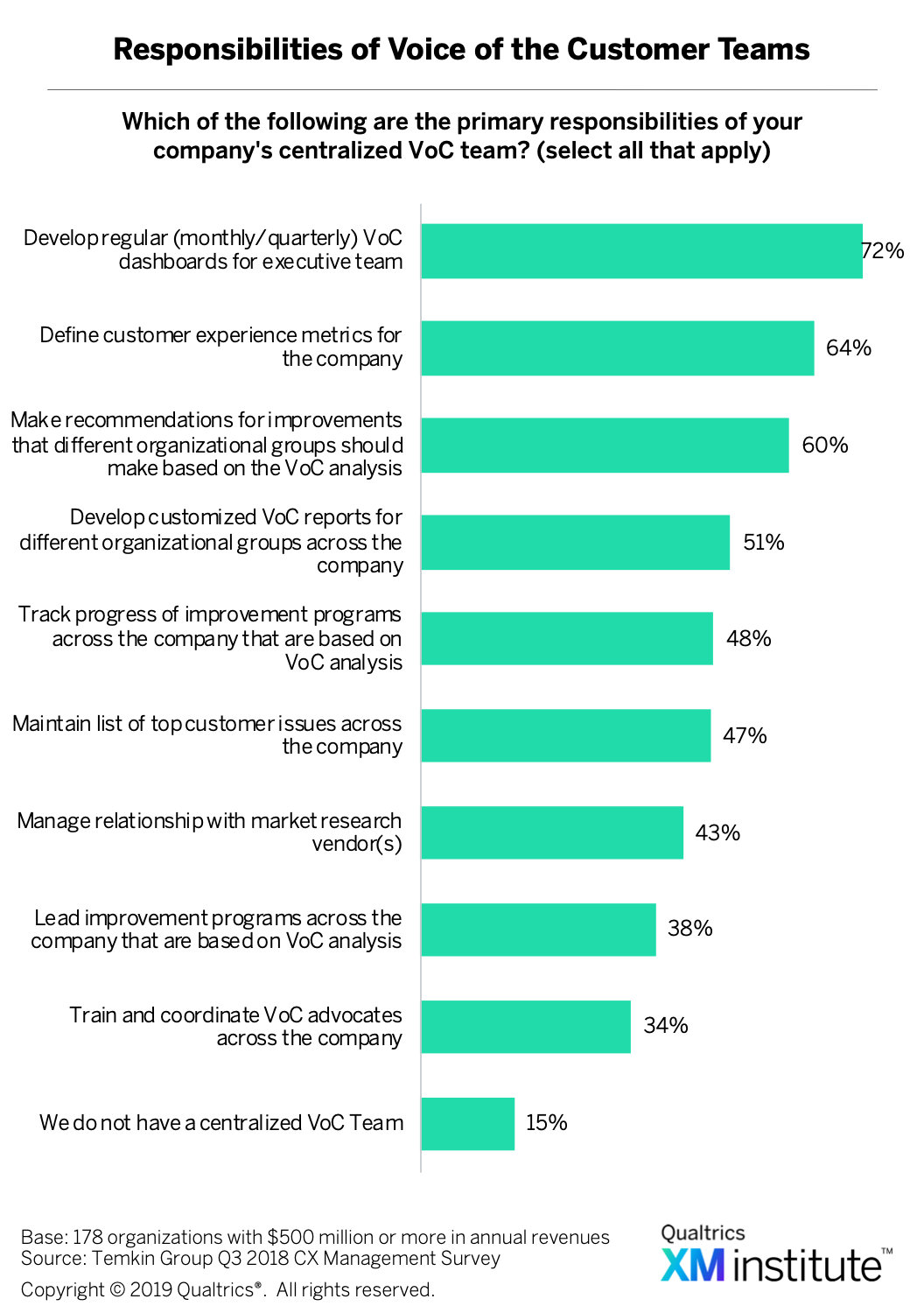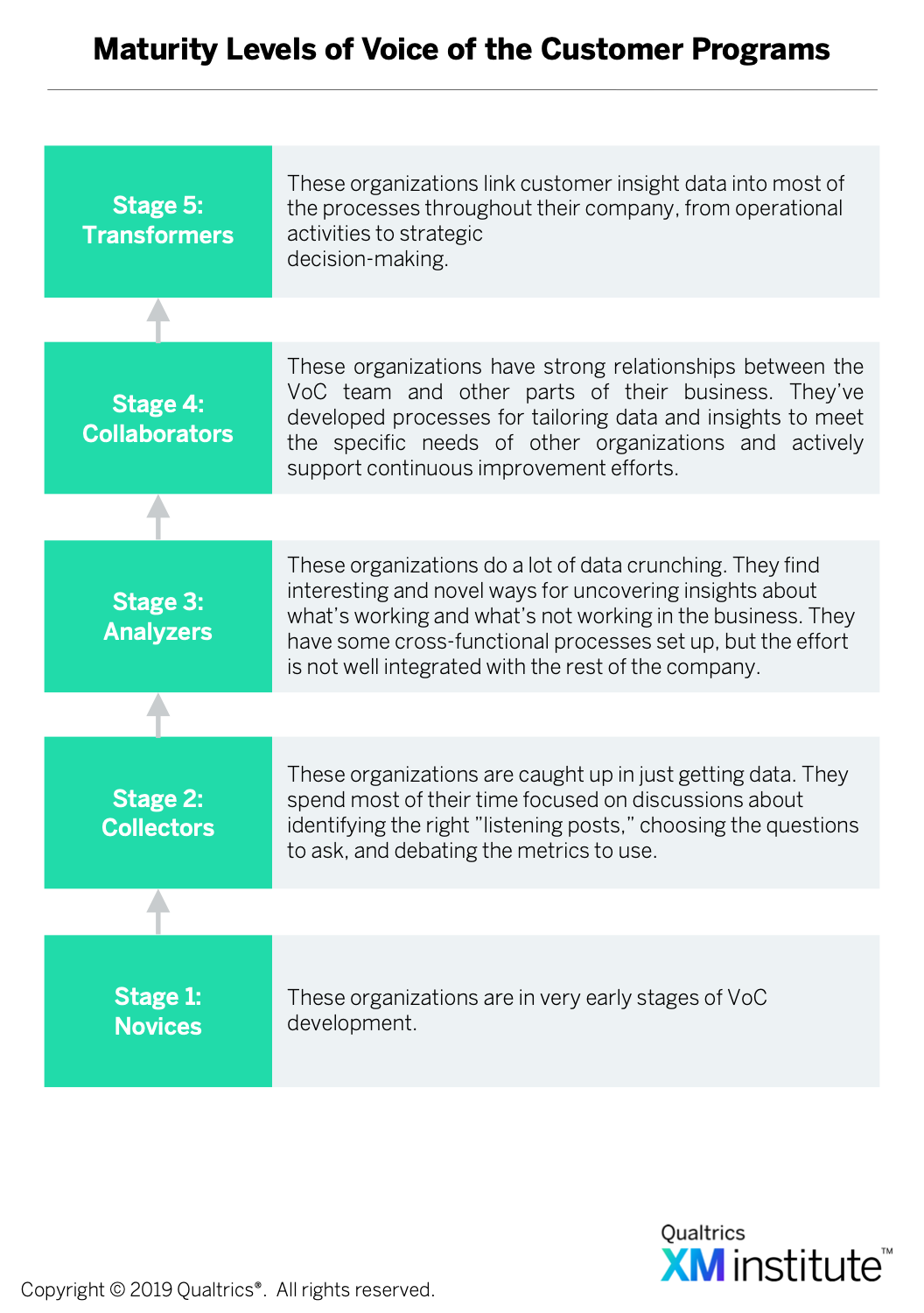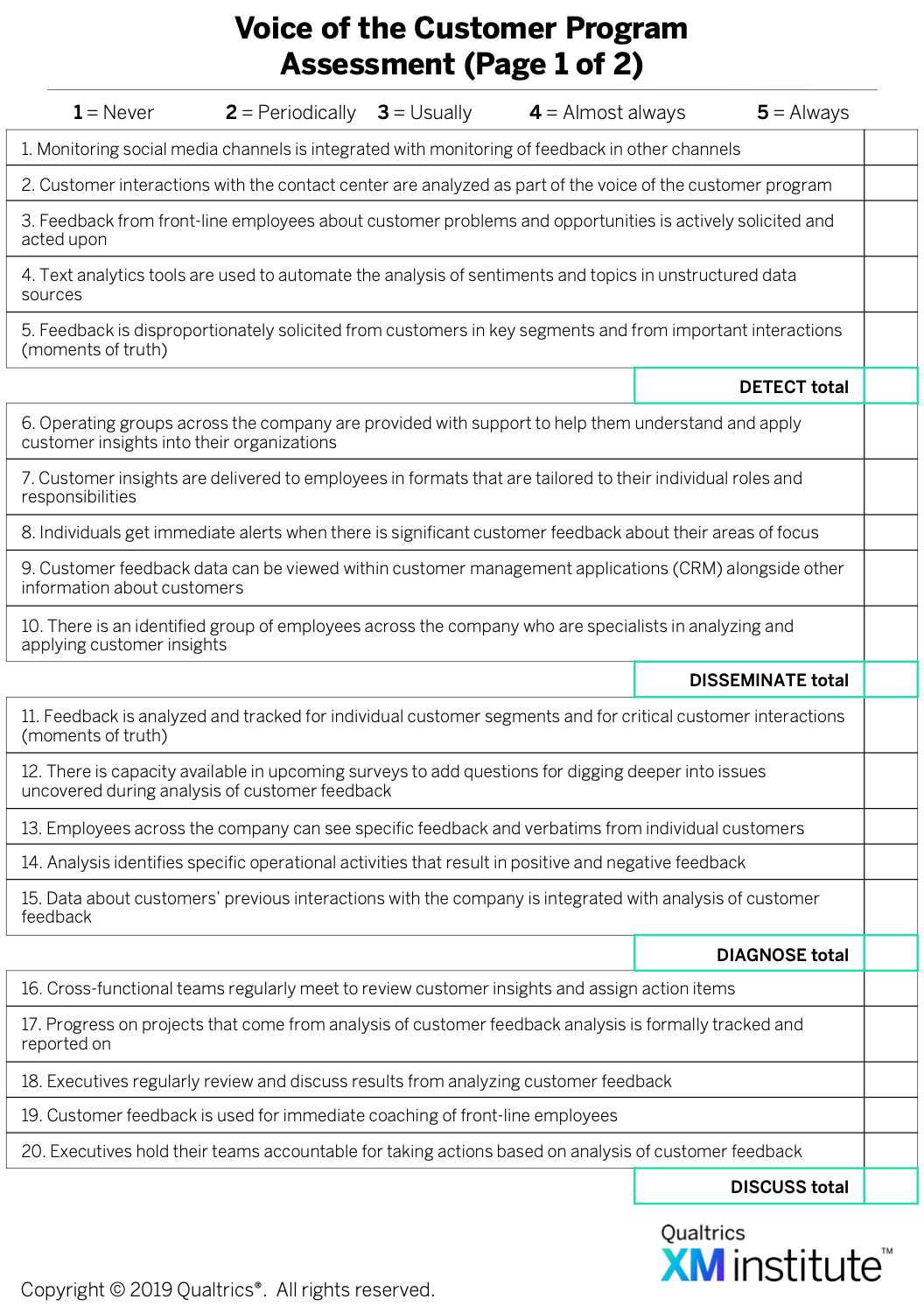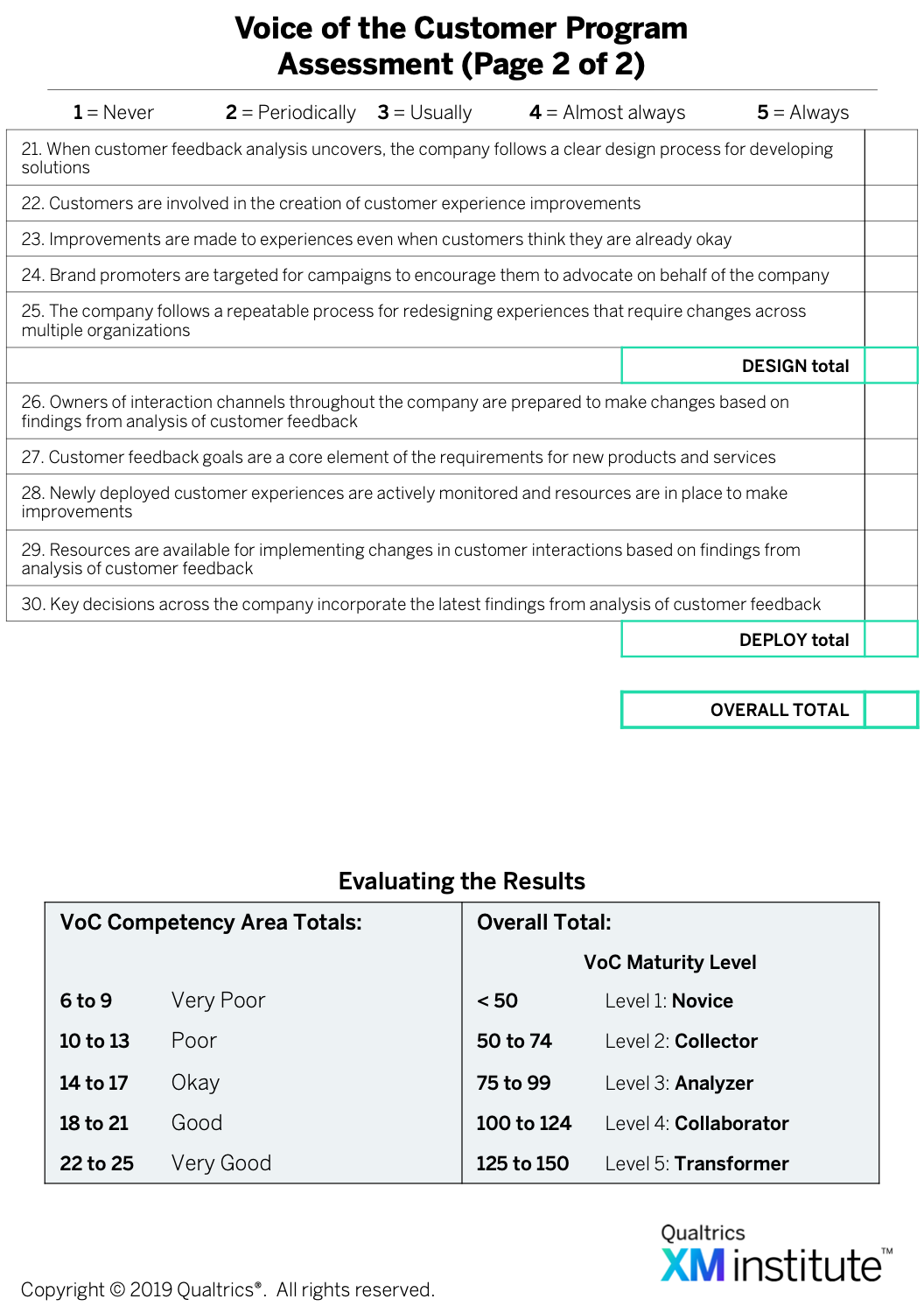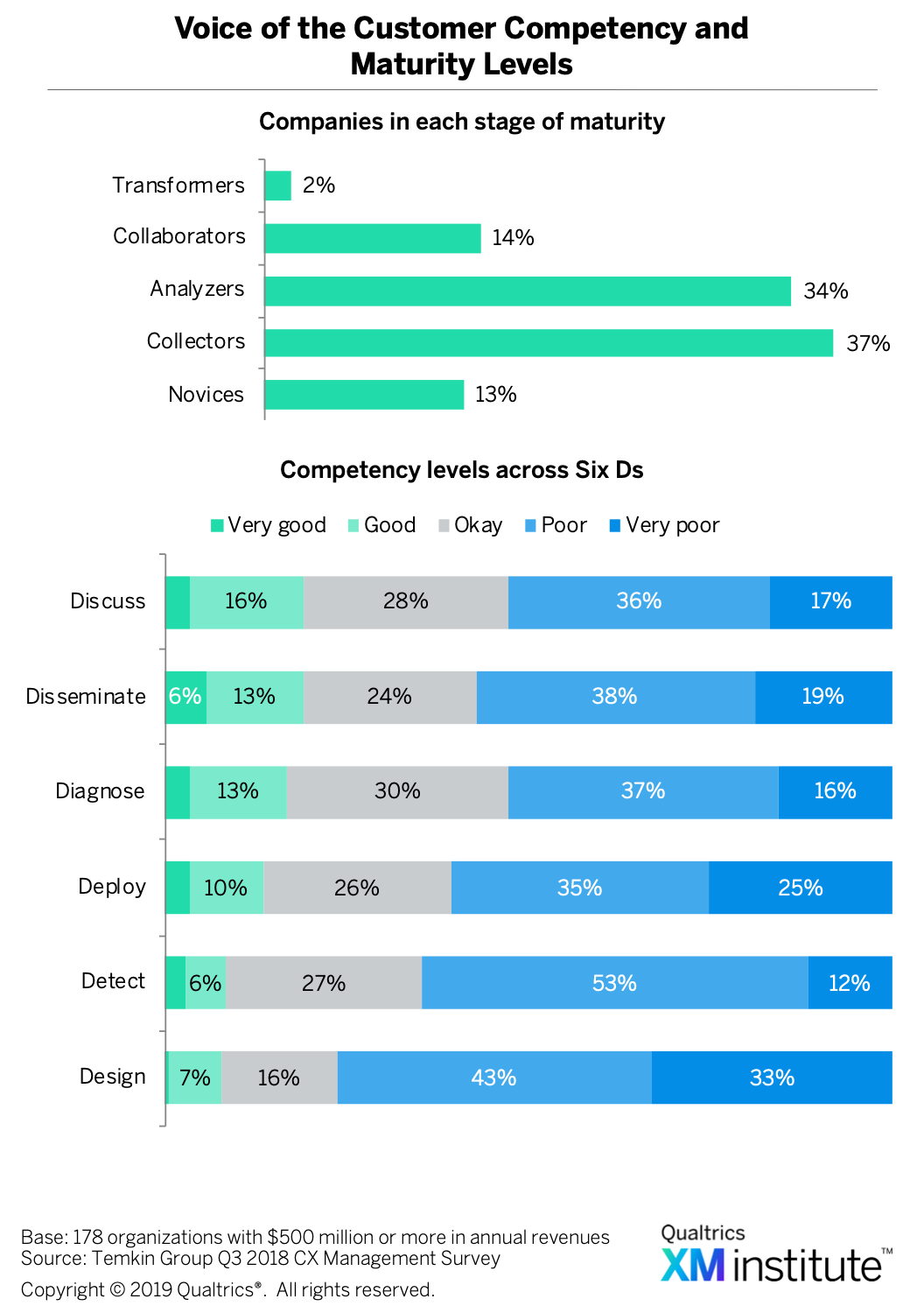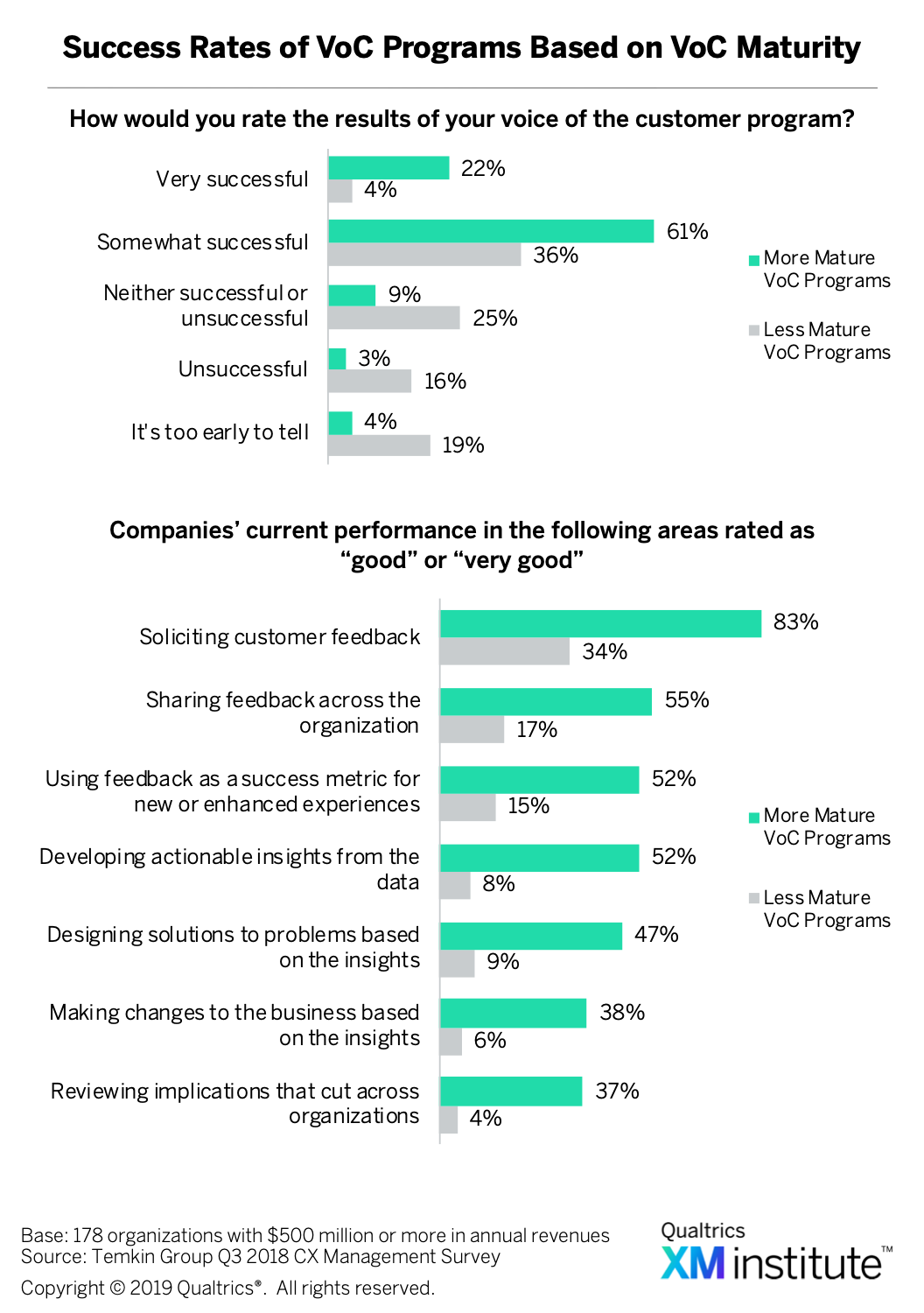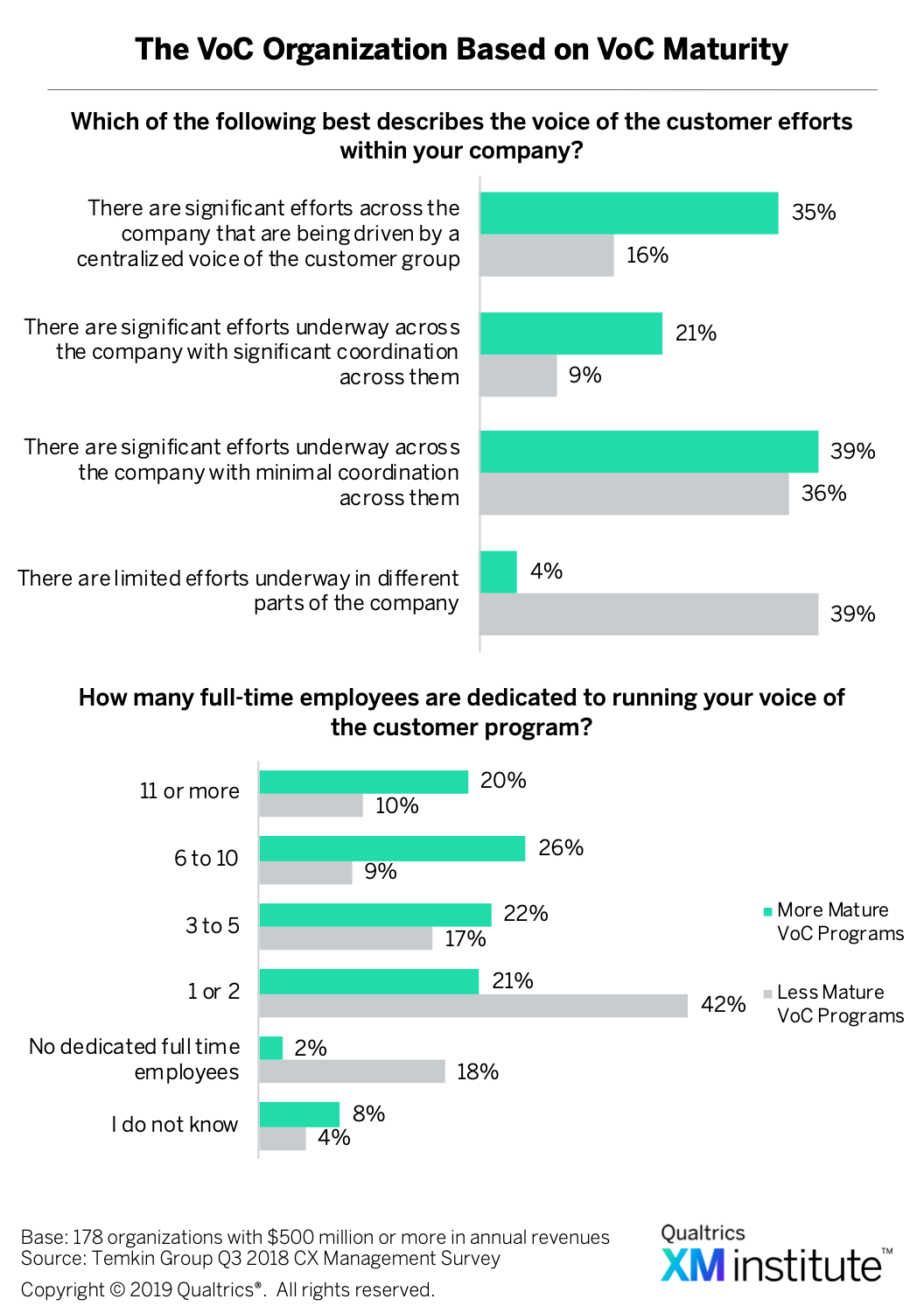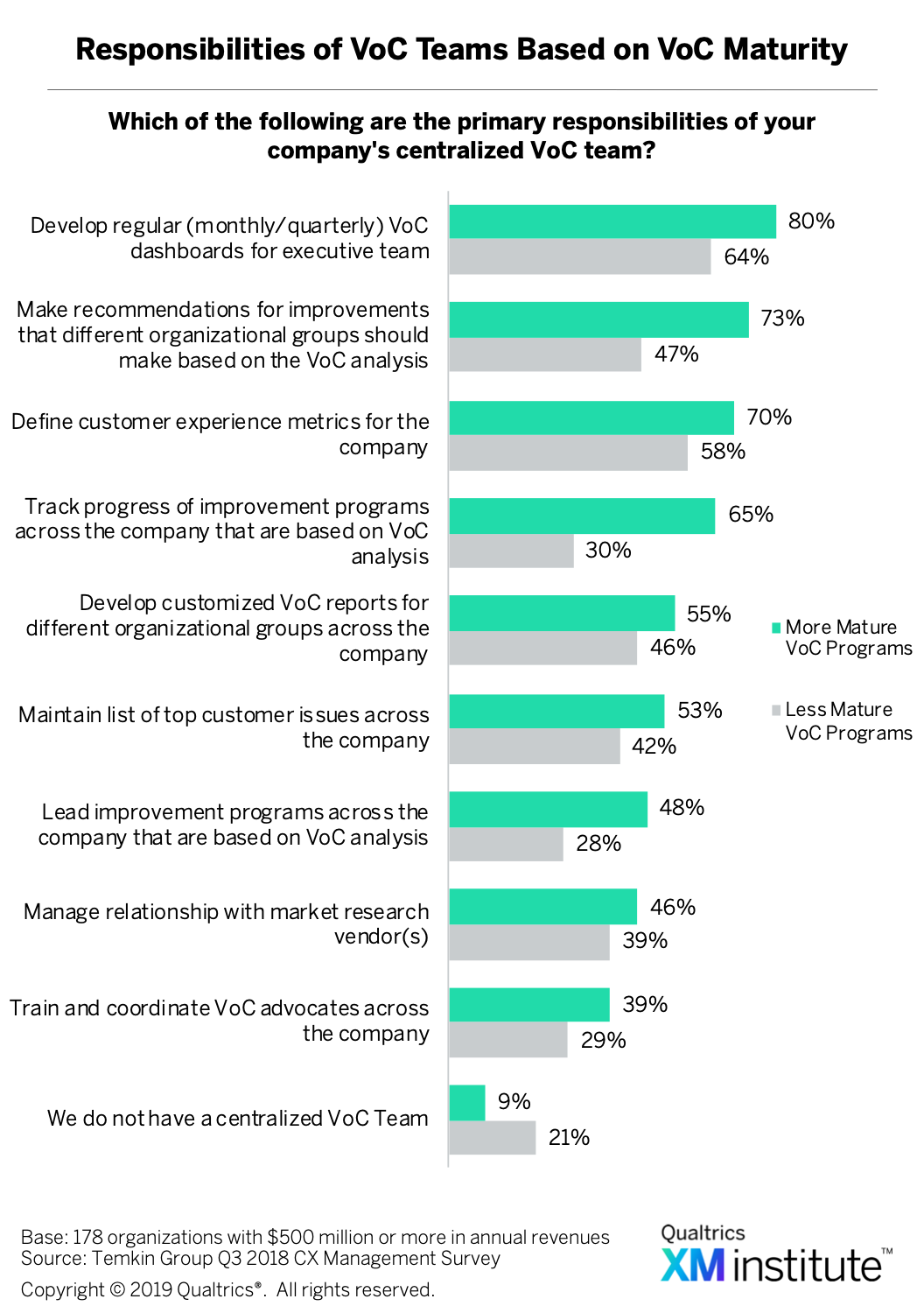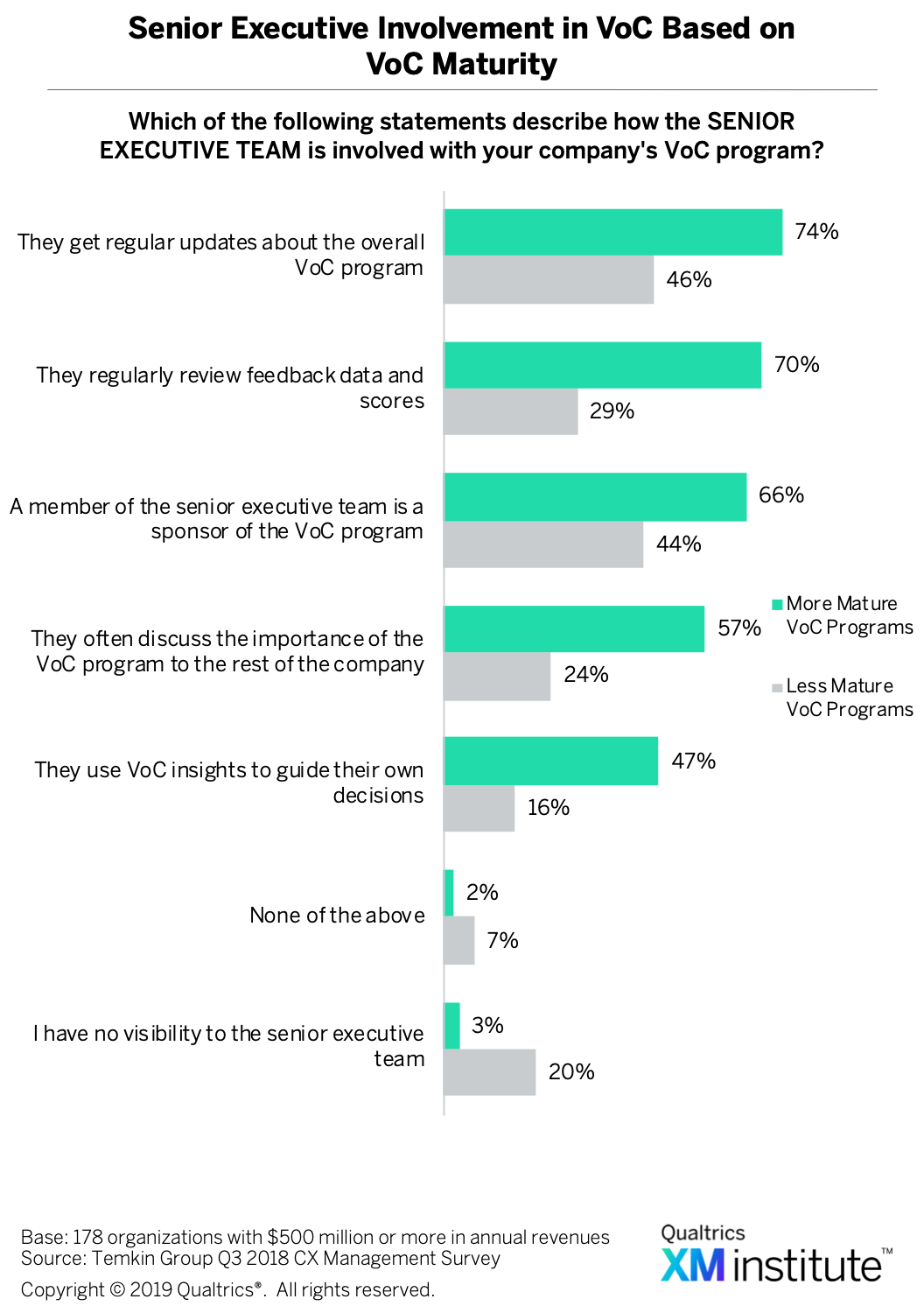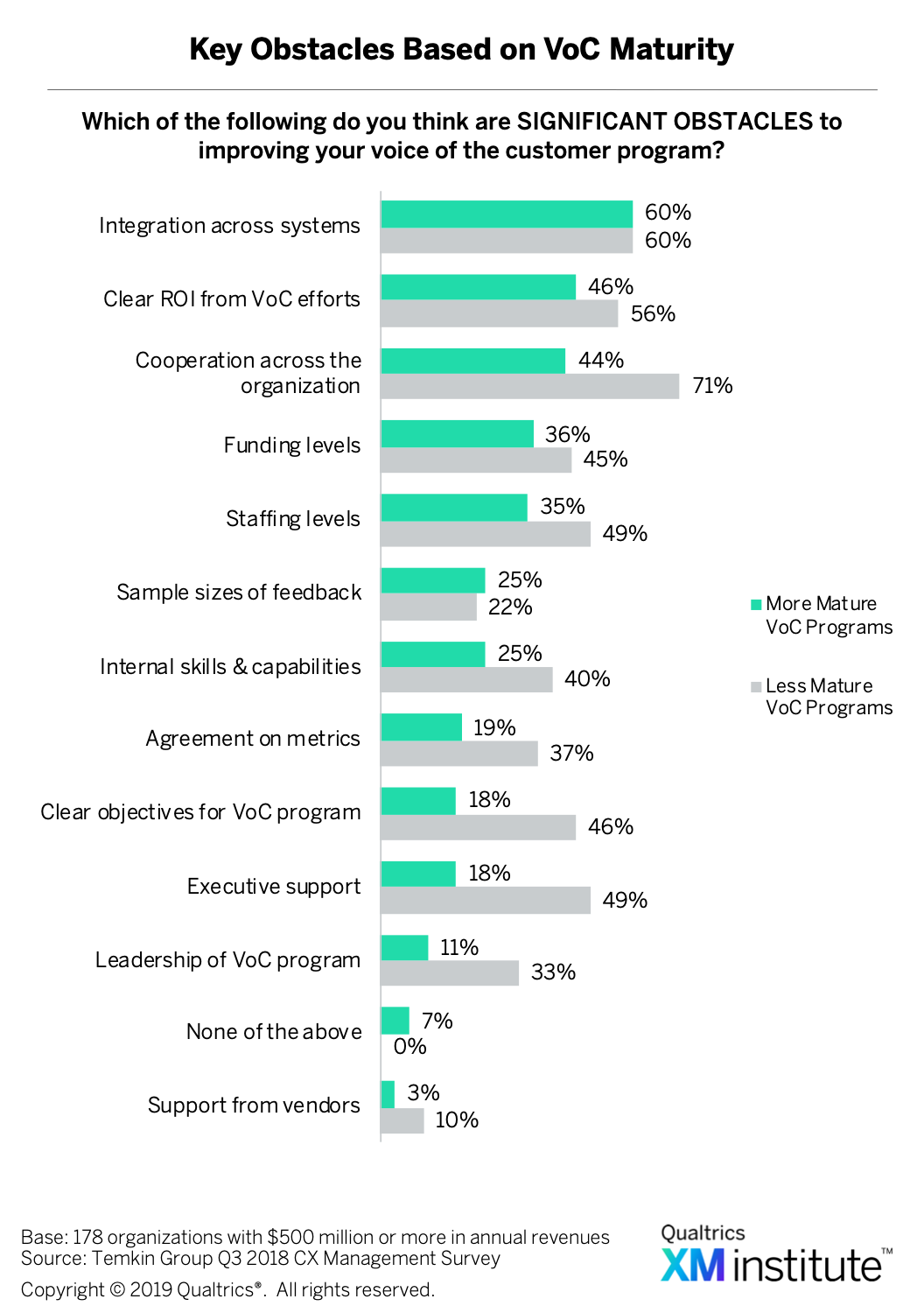VoC Programs Are Largely Successful, But Still Have Room to Improve
Voice of the customer (VoC) programs form the cornerstone of most companies’ customer experience efforts. To understand the state of these programs, we surveyed 178 large organizations with VoC programs.1 Our analysis shows that:
- Most VoC programs deliver results. Almost two-thirds of the companies we surveyed report that their VoC programs are either “somewhat” or “very” successful, while only 10% of respondents rate their VoC efforts as “unsuccessful” (see Figure 1).
- Organizations are struggling to make changes to their business. While nearly six in ten respondents consider themselves “good” or “very good” at soliciting customer feedback, only about one-fifth feel equally as confident in their ability to make changes to their business based on those insights or their ability to review implications that cut across the organization.
- The most value comes from fixing problems. When we asked the respondents about how their VoC program has helped their organization, more than half said their program delivers significant value by identifying and fixing process issues and quick-hit operational issues (see Figure 2).
- Technology is playing an increasingly important role. We asked companies to predict how important different technologies will be to their VoC programs in the upcoming months. In each of the areas, the percentage of respondents who think that the technology will become more important in the coming year dwarfs the percentage of those who think it will become less important (see Figure 3). At the top of the list, 67% believe that “integration of survey data with CRM and operational data” will become more important over the next year.
- O-Data is becoming more important. When we asked companies to estimate how important they expect different sources of customer insights to be three years down the road, 77% said they predict that customer interaction history will be more important, while only 35% said the same about multiple choice surveys (see Figure 4).
- Most surveys work in mobile browsers. How do companies collect feedback through mobile devices? Fifty-five percent of companies use mobile browsers to gather insights, while only 2% use beacons or location-sensing mechanisms (see Figure 5).
- Most firms have a full-time VoC staff. Forty percent of organizations have significant VoC efforts underway that are highly coordinated (see Figure 6). More than 80% of respondents have at least one full-time employee dedicated to their VoC program, and more than 30% have six or more employees on their VoC team.
- VoC teams most frequently develop dashboards. More than 70% of voice of the customer teams are responsible for developing regular (i.e. monthly or quarterly) VoC dashboards for their executive team (see Figure 7). The next most common activity, with almost two-thirds of respondents citing it as a primary responsibility, is defining customer experience metrics for the company.
- Executives see VoC data, but don’t use it for their decisions. We provided respondents with five statements describing different ways in which their senior executive team could participate in VoC efforts, and then we asked them which of the statements applied to their company (see Figure 8). We found that executives are most likely to receive regular updates about the overall VoC program and are least likely to use VoC insights to guide their own decisions.
- Integration remains a serious problem. Six in ten companies identified “integration across systems” as a significant obstacle to their VoC efforts (see Figure 9). The second most common obstacle, with 57% citing it as a problem, is “cooperation across the organization.”
Assessing the Maturity of VoC Programs
To evaluate the maturity level of organizations’ VoC programs, we used our VoC assessment, which is built around “Six Ds” (see Figure 10):
- Detect: Monitor the right feedback at the right time from the right customers and combine it with other key data sources.
- Disseminate: Put information in the hands of the right people at the right time in the right form so that they can act upon it.
- Diagnose: Gain a deeper understanding of problems or opportunities that the feedback uncovers.
- Discuss: Get the right people from the right organizations reviewing the right information to understand what’s affecting customers.
- Design: Follow user-centric approaches for identifying changes that will improve the customer experience.
- Deploy: Make ongoing changes to the experiences and the processes for monitoring those changes.
Five Levels of VoC Maturity – From Novices to Transformers
As companies master the Six Ds, they evolve through five levels of maturity, moving from “Novices” through to “Transformers” (see Figure 11). Using a 30-question assessment, we examined the results from respondents who completed the assessment, and we found that (see Figure 12), (see Figure 13):
- There is a lot of room for improvement. Only 16% of companies have reached the top two levels of VoC maturity, while 50% are still in the bottom two levels (see Figure 14). This lack of maturity is exemplified by the fact that Discuss and Disseminate tied for the highest competency level of any of the 6 Ds, and yet only 19% of companies received at least a “good” rating in either category.
- Design is the weakest link. Only 8% of respondents earned a “good” or “very good” rating for Design, making it the lowest scoring area of the Six Ds.
Anatomy of Successful VoC Programs
Based on their overall scores in the VoC assessment, we split the companies into two groups and compared the top half of the companies (those with more mature VoC programs) to the bottom half of the companies (those with less mature VoC programs). We compared these two and found that more mature VoC programs:
- Enjoy more success. Eighty-three percent of VoC leaders report operating successful VoC programs, compared with only 40% of VoC laggards (see Figure 15). And while leaders rated their current performance higher in every area we examined, the two areas where they most outpaced laggards, with gaps of more than 40 percentage-points, were in soliciting customer feedback and developing actionable insights from the data.
- Help their companies fuel continuous improvement. The mature VoC programs report helping their companies in each of the 13 potential areas we listed more frequently than their less mature counterparts (see Figure 16). However, the largest gap between VoC leaders and VoC laggards occurs when it comes to “fueling a continuous improvement process.”
- Are more mobile-oriented. Although mature VoC programs are much more likely to use every mobile collection mechanism we listed, they especially distinguish themselves from laggards when it comes to surveying through a mobile app (see Figure 17).
- Benefit from a larger staff and more coordinated efforts. Forty-six percent of more mature VoC programs are staffed with at least six full-time employees, compared with only 19% of less mature programs (see Figure 18). These leaders are also much more likely to have VoC programs that are significantly coordinated across their organizations.
- Have VoC teams with more responsibilities. Companies with more mature VoC programs are more likely to have their VoC teams handle all 10 of the responsibilities we listed (see Figure 19). These two groups differ most, however, when it comes tracking the progress of improvements across the organization.
- Benefit from significantly more engaged executives. One of the most dramatic differences between these two groups of companies is the level of involvement from their executive teams; senior executive teams are significantly more involved in mature VoC efforts across every single area we examined (see Figure 20). In fact, executives at companies with more mature VoC programs are more than 20 percentage-points more likely to do all of the activities we listed.
- Are facing fewer significant obstacles. Companies with more mature VoC programs are less likely to run into almost all of the problems we listed, with the exception of “integration across systems” and “sample sizes of feedback” (see Figure 21). The top issue for mature VoC programs is “integration across systems,” while the top obstacle for less mature VoC programs is “cooperation across the organization.”
Propel Your VoC Program to the Next Generation
Here’s what we recommend for propelling your VoC program to the next level:
- Benchmark your VoC maturity. Complete the VoC assessment and compare your results for each competency, as well as your overall maturity score, with those of other large companies (see Figure 22).
- Discuss the results. Share your findings with colleagues, and then discuss the implications of your scores and talk about any differences between your assessments.
- Identify areas of weakness. Using the results from the assessment, determine which of the Six Ds needs the most work. Be sure to look at the individual questions to spot potential areas for improvement.
- Set plans for improvement. Identify a few specific areas to focus on and then put plans and measurements in place for improving your VoC program.
- Temkin Group completed this survey of 178 organizations with $500 million or more in annual revenues during September and October 2018.













 ,
, :
:








